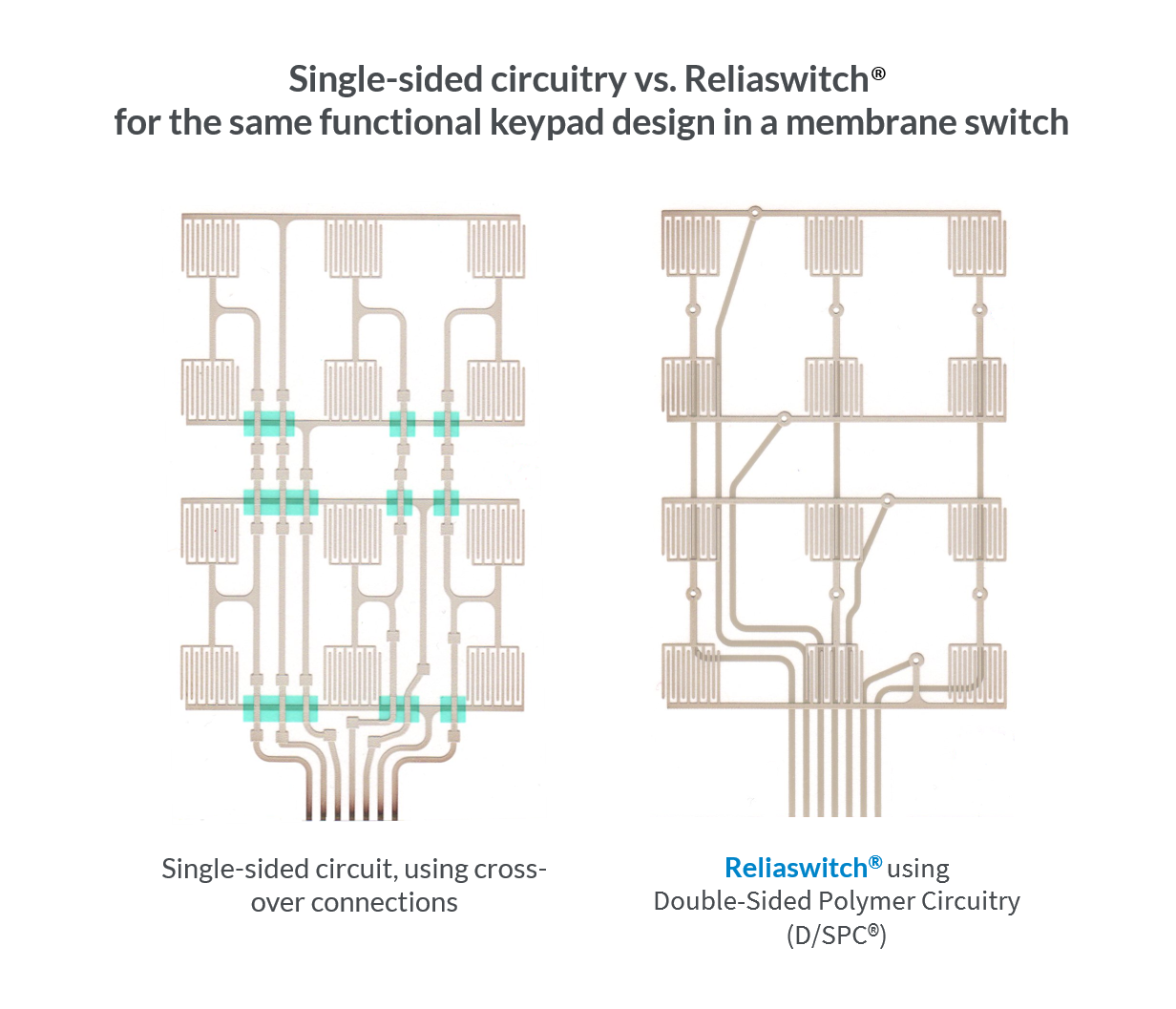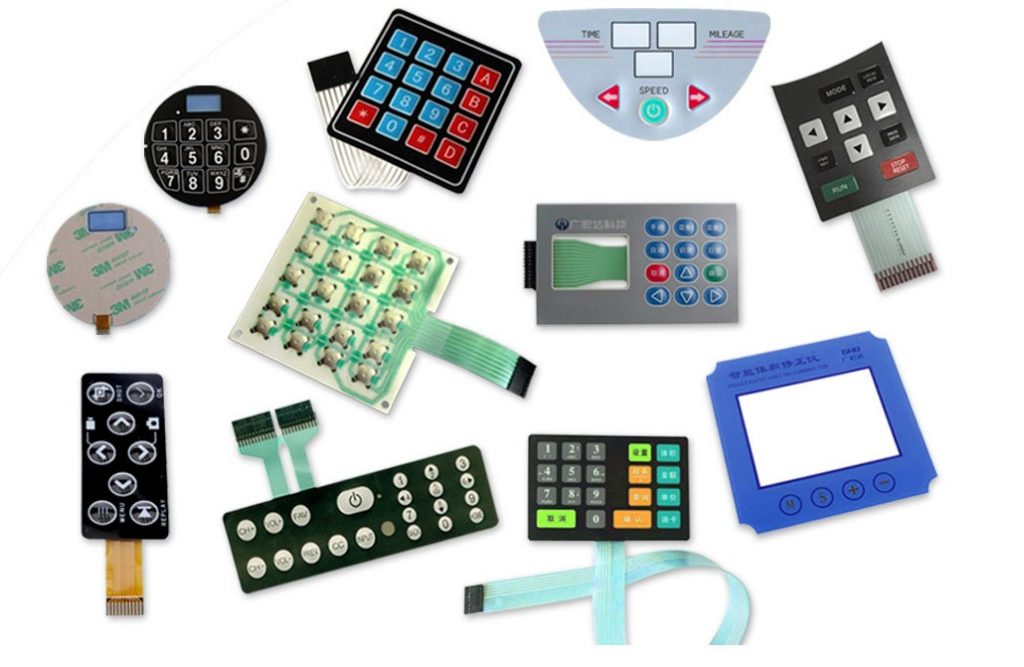The evolution of membrane switch in aerospace engineering
Understanding the Value of Membrane Layer Switch Over in Modern Electronic Devices
Membrane switches are important elements in contemporary digital gadgets. They use a mix of functionality and style that boosts customer communication. Their durable and lightweight nature makes them ideal for different applications. As sectors progress, the need for customization and progressed functions grows. Understanding how membrane layer changes add to technology discloses their value fit the future of electronics. What lies ahead for this technology?
The Basics of Membrane Switch Technology
Although commonly ignored, membrane switch modern technology plays a crucial role in the modern electronics landscape - membrane switch. These devices, composed of multiple layers, act as interface for various digital products, ranging from home home appliances to medical tools. A typical membrane layer button includes a visuals overlay, a spacer layer, and a circuit layer, which are thoroughly put together to produce a functional interface.When pressure is used to the overlay, the circuit layer is completed, allowing signals to be transmitted to the gadget. This technology is recognized for its convenience, making it possible for customization in style, shape, and functionality to fulfill particular customer needs. Furthermore, membrane switches are lightweight and thin, making them appropriate for applications where space is a costs. Their resilience and resistance to environmental factors additionally improve their charm, guaranteeing they can hold up against harsh problems while keeping functionality. Generally, membrane layer switch modern technology is integral to creating easy to use and efficient electronic gadgets

Secret Advantages of Membrane Switches
Membrane switches over deal several vital benefits that make them a favored choice in numerous digital applications. Their style permits a compact form factor, enabling makers to create light-weight and smooth devices. Furthermore, membrane layer switches are resistant to dirt, dampness, and chemicals, which enhances their resilience and durability in requiring settings. The responsive responses offered by these buttons can enhance individual experience, making them instinctive and very easy to operate.Furthermore, membrane layer switches can be personalized with diverse graphics and shades, enabling one-of-a-kind branding possibilities. The production procedure is normally cost-efficient, especially for high-volume manufacturing, as it reduces assembly time and simplifies layout. Membrane layer changes require marginal maintenance, contributing to lower total functional costs. These advantages underscore their growing popularity in contemporary electronics, where integrity and straightforward user interfaces are crucial.

Applications Throughout Numerous Industries
The flexibility of membrane layer switches over allows their widespread fostering throughout various industries. In the clinical field, they are generally used in analysis devices and patient monitoring systems, using a sturdy user interface resistant to contaminants. The automobile sector makes use of membrane layer buttons for dashboard controls, enhancing individual experience with smooth designs that hold up against harsh problems. In customer electronics, they serve as control panels for tools such as microwaves and coffee machine, providing an easy to use interface that is easy to tidy. The aerospace field utilizes membrane layer buttons in cockpit controls, where reliability and area performance are paramount. In addition, the commercial sector leverages these buttons in equipment and control systems to guarantee durable procedure popular environments. This broad range of applications underscores the adaptability of membrane switches, making them indispensable parts in boosting functionality and individual interaction throughout varied technological landscapes.
Customization and Layout Adaptability

Future Patterns in Membrane Layer Switch Over Development
Emerging fads in membrane layer button growth suggest an expanding emphasis on enhanced functionality and assimilation with smart page innovations. As customer demand for extra innovative electronic gadgets boosts, suppliers are concentrating on creating membrane layer changes that not only serve fundamental operational functions however additionally integrate attributes like touch level of sensitivity, backlighting, and haptic feedback.Furthermore, innovations in materials are expected to enhance sturdiness and environmental resistance, making membrane switches appropriate for varied applications in industries such as health care, automotive, and customer electronics. The assimilation of capacitive touch modern technology is most likely to end up being extra widespread, permitting sleeker layouts and improved individual interfaces. membrane switch.Additionally, the surge of the Net of Things (IoT) is triggering the growth of membrane switches that can interact wirelessly with other gadgets, boosting interconnectivity. Generally, the future of membrane switch innovation appears appealing, driven by advancement and the pursuit of user-friendly services
Regularly Asked Questions
Just How Do Membrane Switches Over Compare to Conventional Mechanical Switches?
Membrane layer buttons, being a lot more space-efficient and link providing a smooth style, contrast with conventional mechanical buttons that offer responsive feedback. The previous frequently include customizable graphics, while the last usually guarantee sturdiness and integrity in different applications.
What Materials Are Frequently Utilized in Membrane Layer Switch Over Manufacturing?
Membrane layer buttons are normally generated making use of materials such as polyester, polycarbonate, and printed conductive inks. These products offer flexibility, sturdiness, and responsiveness, making them ideal for various applications in electronic gadgets and customer interfaces.
Can Membrane Layer Switches Be Repaired or Recycled?
Membrane switches can often be fixed, specifically if small issues develop, such as sticky failure or surface damage. Nevertheless, full reuse is normally limited as a result of wear and potential deterioration of materials in time.
How Do Environmental Aspects Affect Membrane Layer Switch Efficiency?
Ecological aspects, such as temperature level, direct exposure, and humidity to chemicals, substantially influence membrane layer switch performance. Severe conditions can cause degradation, impacting responsiveness and durability, inevitably compromising the performance of the gadget in different applications.
What Is the Typical Life-span of a Membrane Switch?
The common lifespan of a membrane layer button typically varies from 1 to 5 million actuations, relying on elements such as usage frequency, ecological conditions, and the products made use of in manufacturing, influencing durability and efficiency longevity. A normal membrane switch consists of a visuals overlay, a spacer layer, and a circuit layer, which are thoroughly assembled to produce a useful interface - membrane switch.When pressure is applied to the overlay, the circuit layer is completed, allowing signals to be transmitted to the tool. The responsive feedback given by these switches can boost user experience, making them easy and intuitive to operate.Furthermore, membrane switches can be tailored with varied graphics and colors, permitting for special branding possibilities. As customer need for a lot more advanced electronic devices increases, makers are concentrating on creating membrane layer changes that not just my latest blog post offer standard functional roles but likewise integrate functions like touch level of sensitivity, backlighting, and haptic feedback.Furthermore, improvements in products are anticipated to enhance toughness and ecological resistance, making membrane layer changes ideal for diverse applications in industries such as medical care, automobile, and consumer electronics. The combination of capacitive touch modern technology is likely to come to be much more widespread, allowing for sleeker designs and improved customer interfaces.Additionally, the rise of the Web of Things (IoT) is prompting the growth of membrane switches over that can connect wirelessly with various other tools, enhancing interconnectivity. Membrane buttons, being a lot more space-efficient and providing a smooth layout, contrast with conventional mechanical buttons that offer responsive feedback